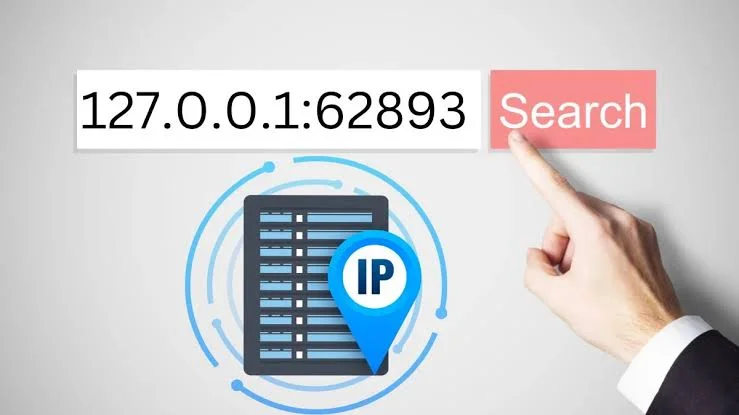What is 127.0.0.1:62893?
In the realm of computer networking, 127.0.0.1 refers to the loopback IP address, a standard network address that allows a device to communicate with itself. This address is integral in various networking tasks, providing an essential means for testing and troubleshooting network configurations. The term ‘loopback’ signifies the way data sent from the device is returned back, effectively enabling interaction with network services without the need for actual physical network interfaces.
When it comes to the structure of an IP address, the number following the colon in 127.0.0.1:62893 signifies a port number. Ports serve as communication endpoints on a host system, allowing multiple simultaneous network connections and processes to occur. The specific port 62893 can be assigned to different applications or services, facilitating various types of data communication on the local machine. Its usage helps to organize data streams, ensuring that requests and responses are properly directed to the correct application or service, enhancing overall system efficiency.
Understanding the context of 127.0.0.1:62893 is particularly significant for developers and users who engage with local servers or applications during the development process. For instance, a web developer may use this loopback address combined with a specific port to test web applications on their local environment before deploying them to a live server. This not only speeds up the development process but also allows for troubleshooting and debugging in a controlled setting. This loopback mechanism promotes a seamless interaction between software applications and the operating system, optimizing local networking capabilities.
Common Use Cases for 127.0.0.1:62893
The IP address 127.0.0.1, often referred to as the localhost or loopback address, is integral in many networking applications. When paired with a specific port like 62893, it becomes particularly valuable in various scenarios, especially in software development and testing environments. Developers frequently utilize 127.0.0.1:62893 to simulate server-client interactions on the same machine, which streamlines the testing process without the need for an external network.
In software development, using this combination allows developers to run applications locally. For instance, if a web application is being created, developers can host their application on a local server and access it via 127.0.0.1:62893. This practice not only eliminates potential network-related issues but also enhances the debugging process, as developers can monitor and interact with their applications in real-time, ensuring a smoother development cycle.
Another significant use case for 127.0.0.1:62893 arises in the context of testing various web services and APIs. By configuring these services to run on localhost, testers can send and receive data without the complexities of real-world networking. This method is especially effective in environments where network performance can be unpredictable or when simulating responses from external services. Additionally, using the loopback address can aid in isolating services during troubleshooting, allowing developers to identify and rectify problems effectively.
Moreover, certain applications such as databases and web servers also leverage 127.0.0.1:62893 for internal communication purposes. This ensures that critical operations can be conducted swiftly and securely without depending on external resources or facing internet latency. Overall, the use of 127.0.0.1:62893 in development and testing showcases its robustness and reliability as an essential tool for modern technological workflows.
Security Implications of Using 127.0.0.1:62893
The utilization of the loopback address 127.0.0.1:62893 is a fundamental aspect of network security, particularly during the development and testing of applications. As a designated address, 127.0.0.1 allows developers to communicate with services running on their local machine without exposing them to external networks. This isolation is pivotal, promoting secure data transmissions, as any data sent to this address remains internal and cannot be intercepted or modified from external sources.
However, while using 127.0.0.1:62893 carries significant security benefits, there are potential risks to consider. Developers who expose localhost services to the public internet inadvertently increase the potential attack surface. By opening ports and making services accessible over the loopback address, they may facilitate unauthorized access, leading to potential exploitation of vulnerabilities within the application. Security experts often emphasize the importance of properly configuring firewall rules and employing authentication mechanisms for any services that may utilize this address. This ensures that even if services are running on the local interface, they remain protected from external threats.

To maintain optimal security when using 127.0.0.1:62893, developers should adhere to best practices. These include regularly updating software to patch vulnerabilities, employing encryption for data in transit, and conducting thorough testing to identify security weaknesses. Additionally, considering the implementation of virtual private networks (VPNs) can enhance security by encrypting data that may traverse other networks. The use of this loopback address can remain an effective means of development and testing while safeguarding sensitive information when appropriate measures are taken. Ultimately, understanding the balance between convenience and security is crucial for developers working with localhost interfaces.
Troubleshooting Common Issues with 127.0.0.1:62893
When working with the loopback address 127.0.0.1:62893, users may encounter a variety of common issues that can disrupt connectivity and service functionality. Understanding how to diagnose and address these problems is critical for a smooth operation.
One of the most frequent errors includes service unavailability. This may occur when the application or service intended to listen on port 62893 is not running. To resolve this, first ensure that the service is correctly installed and active. You can utilize command-line tools such as netstat to inspect the current listening ports. Executing netstat -an will allow you to check if 127.0.0.1:62893 is in the list of active ports. If it does not appear, restarting the service is often necessary.
Another common issue relates to firewall settings. Sometimes, firewall configurations may block access to 127.0.0.1:62893. To troubleshoot this, navigate to your firewall settings and explicitly allow connections on port 62893 for local applications. Testing connectivity can also be valuable; you can ping the loopback address or use Telnet with telnet 127.0.0.1 62893 to ascertain whether the port is reachable.
Additionally, users may experience problems associated with application configuration. Verify that the application trying to access 127.0.0.1:62893 is set to the correct port and IP address. Misconfigurations in the environment or configuration files often lead to connectivity problems. Checking application logs can also provide insights into any relevant error messages that can assist with troubleshooting.
Overall, by following these troubleshooting tips, users can effectively diagnose and resolve issues related to the loopback address 127.0.0.1:62893, enhancing their overall experience when utilizing local services.
May Be You Also Read
